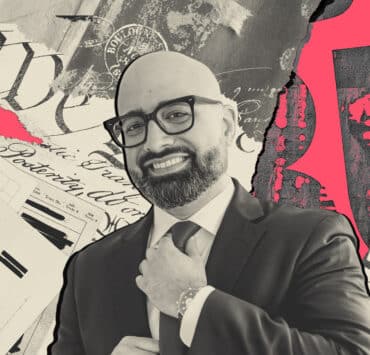|
Getting your Trinity Audio player ready...
|
Ten years ago, Glenn Llopis published “Without Hispanics, America’s Corporations Can’t Grow and Compete” in Forbes. Some might have considered him at the time either naïve because they did not think his point was valid or because the title is a little bit bold and he was one of the few writing about this at the time, or perhaps readers considered him a futurist. However, he may not have been that naïve.
Today the US demographics are changing, and Latinos are and will continue to play a role in its future. This is not a new phenomenon as this article touches on the Latino history in the US, highlights the present growth and impact of Latinos, and alludes of what is to come in the future.
The US is home to 63 million Latinos. This makes the US the second country in the world with most Latinos and where Spanish is spoken. There are more Latinos in the US than Canada has Canadians and Spain has Spaniards.
The Past
There are many who seem to forget or not pay attention to history and the contributions and influence of Hispanics and Latinos. Spain was one of three European countries that claimed land in America. In 1513, Juan Ponce de Leon landed in what is now Saint Augustine, Florida, which is the oldest city in the United States—well before England and France founded their own settlements in America.
People from across the world have traveled across the world to make a new home in the United States. If you were to look at the demographics of the US in the early 1900s and compare it to the demographics of the US today, you would see a shift from majority western European countries to Latin American countries.
Throughout US history, Latinos have made significant contributions and advancements and below are just a few examples:
- Guillermo Gonzalez Camarena is credited with the color TV.
- Luis Von Ahn coinvented CAPTCHA, created reCAPTCHA, and cofounded Duolingo.
- Isaac Peral invented one of the first versions of the submarine.
- Domingo Santo Liotta developed the first artificial heart.
- Manuel Jalón Corominas created the disposable syringe.
- Franklin Chang-Díaz was the first Latino astronaut.
- Carlos Albizu Miranda was one of the first Hispanics to earn a PhD in psychology in the United States and the first Hispanic educator to have a North American university renamed in his honor.
- Albert Vinicio Báez coinvented the X-ray reflection microscope with Stanford physics professor Paul Kirkpatrick in 1948.
“Organizations will not only need to maximize their changing workforce demographics but also look for ways to have increasingly multicultural leadership.”
Edwin Mouriño
The Present
Now, the US is home to the second largest demographic of Latinos in the world. Latinos make up one-fifth of the US population and are one-fourth of the US workforce. They will make up 78 percent of the new US workers in this decade, 40 percent of US workforce growth, and are responsible for over 30 percent of the US population growth.
As Dr. Robert Rodriguez wrote in his book Latino Talent: Effective Strategies to Recruit, Retain, and Develop Hispanic Professionals: For every non-Latino who dies, there is one born. For every Latino that dies, eight are born.
They have a $4.1 trillion purchasing power, and if they were a country would make them fifth in the world from a GDP perspective. US Latinos have the fastest-growing GDP as a segment of the US, which is more than any other country—including China. The Latino segment of the country will increasingly add $102 billion to the needed social security system and an estimated almost $400 billion in revenue to all levels of taxes.
Latino’s average age is twenty-seven, while non-Latinos are forty. The US just dropped from a 2.0 replacement rate for the workforce to 1.6, whereas a country needs 2.1. This younger age average makes the Latinos the growth of the future workforce and consumer. This is particularly important to an aging world, and in particular, the US. Every thirty seconds, two non-Latinos retire while one Latino turns eighteen. Latinos have more year-over-year growth than Brazil, Russia, India, and China combined.
The US has the second-largest Spanish speaking population (Mexico is the first), and there is a growing community of biculturalism and bilingualism—some say three languages, if you add in Spanglish. Eighty percent of Latinos are English speakers, and 73 percent have Bachelor and advanced degrees.
Latino-owned businesses are fueling the US economy ten times faster than the national average. In particular, Latina-owned businesses are growing faster than any other group, generating $125 billion in revenue and creating jobs across industries. In addition, Latino consumers are shaping trends across industries and sectors, and their buying power extends twelve years longer than non-Latino segments of society.
Earlier, I highlighted the contributions of numerous Latinos. Our contributions haven’t ended. Just look at some of the well-known Latinos in Hollywood, sports, entertainment, and business: Jessica Alba, Zoe Saldaña, Eva Longoria, Bad Bunny, Sonia Sotomayor, Lin-Manuel Miranda, John Leguizamo, Alexandria Ocasio-Cortez, Ellen Ochoa, and so many others.
This shows the growth and influence that Latinos are having in the US.
“One key common theme I have found among the overall Latino community: They are proud and want to contribute.”
Edwin Mouriño
The Future
While the future is unknown, one thing can be expected, Latinos will be part of the future of the US in bigger ways than probably anticipated. I’ve already highlighted the aging segment of society among non-Latinos. There is a growing skills shortage. This will increase demand and competition for this growing segment of the US. Diversity, equity, and inclusion has become a controversial topic for some, but it is here to stay. The aging demographic, growing multigenerational and multicultural segments of society and in the workplace will continue to grow.
How organizations and their leaders adapt and manage these changes will be the difference between continued existence or not. Organizations will not only need to maximize their changing workforce demographics but also look for ways to have increasingly multicultural leadership.
Managing a multicultural and multigenerational workforce has shown to be better for the bottom line of an organization. Inclusive organizations generate more revenue per employee and make better decisions. Diverse management and executive teams also have an increase in revenue and return advantage.
Success today does not guarantee future presence. Just remember Circuit City and Blockbuster not changing with the needs of the market. Changing demographics will cause organizations to adapt and change in order to maintain a competitive advantage. In addition, as society changes, so will the consumer segment.
This growing Latino demographic is not monolithic. The common denominator among them is their language (even though there are differences from one country to another). They represent a Latino culture, but again there are sometimes subtle and sometimes not subtle differences. And when you add the multigeneration represented along with the dual culture of Latino and American influence (more so with younger Latinos), this does tend to make things less black and white.
The US has been here before. This country was made by immigrants and ongoing changing demographics. It must adapt again if it wants to remain the country of principles and human dignity, irrespective of one’s background or place of origin. Organizations will face the same challenges and opportunities. Organizations and their leaders will need to adapt to the changes taking place.
One key common theme I have found among the overall Latino community: They are proud and want to contribute. Like any human, they want to be included, so an inclusive workplace and organization that recognizes its changing consumers will gain a competitive advantage. Not only is inclusion a good moral practice to have in your organization, but it will also lead to higher profits, a happier workforce, and provide a competitive advantage.
The views expressed in this article are those of the author and do not necessarily reflect the position of Hispanic Executive or Guerrero Media.
As a human capital practitioner, Edwin Mouriño’s philosophy has been on helping leaders and organizations help themselves. He is an experienced professional with many years of leading and/or supporting key elements of organizational change projects. Mouriño is an Air Force veteran. He brings broad industry experience that include Fortune 100 companies. He has also served in an educator role in several higher educational institutions.
He is founder and president of Human Intelligent (HI) Workplace, an organization focused on emphasizing the area of Human Intelligence (HI) in the era of artificial intelligence (AI).
He has extensive experience and thought leadership on human capital trends and supported organizational change efforts through keynotes, leadership development, executive coaching, team development, executive retreats, personality assessments, organizational change, and DEI. He has spoken at numerous professional venues and written numerous articles and books on human capital trends with implications for organizations, its leaders, workforce, and human resource.

